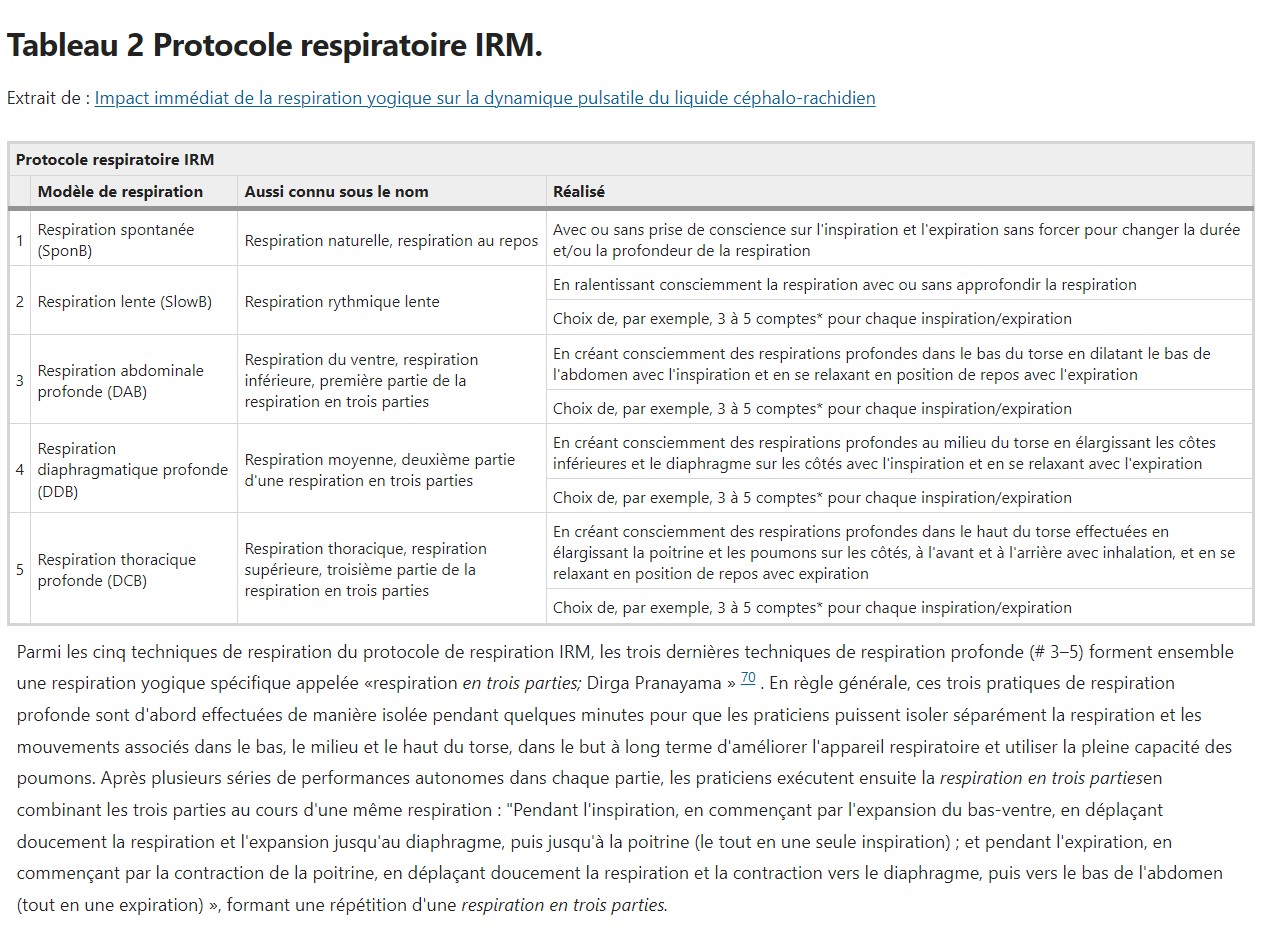Immediate impact of yogic breathing on pulsatile cerebrospinal fluid dynamics
Selda Yildiz, Scientific Reports volume 12, Article number: 10894 (2022)
Cerebrospinal fluid (CSF), a clear fluid bathing the central nervous system (CNS), undergoes pulsatile movements. Together with interstitial fluid, CSF plays a critical role for the removal of waste products from the brain, and maintenance of the CNS health. As such, understanding the mechanisms driving CSF movement is of high scientific and clinical impact. Since pulsatile CSF dynamics is sensitive and synchronous to respiratory movements, we are interested in identifying potential integrative therapies such as yogic breathing to regulate CSF dynamics, which has not been reported before. Here, we investigated the pre-intervention baseline data from our ongoing randomized controlled trial, and examined the impact of four yogic breathing patterns: (i) slow, (ii) deep abdominal, (iii) deep diaphragmatic, and (iv) deep chest breathing with the last three together forming a yogic breathing called three-part breath. We utilized our previously established non-invasive real-time phase contrast magnetic resonance imaging approach using a 3T MRI instrument, computed and tested differences in single voxel CSF velocities (instantaneous, respiratory, cardiac 1st and 2nd harmonics) at the level of foramen magnum during spontaneous versus yogic breathing.
In examinations of 18 healthy participants (eight females, ten males; mean age 34.9 ± 14 (SD) years; age range: 18–61 years), we observed immediate increase in cranially-directed velocities of instantaneous-CSF 16–28% and respiratory-CSF 60–118% during four breathing patterns compared to spontaneous breathing, with the greatest changes during deep abdominal breathing (28%, p = 0.0008, and 118%, p = 0.0001, respectively).
Cardiac pulsation was the primary source of pulsatile CSF motion except during deep abdominal breathing, when there was a comparable contribution of respiratory and cardiac 1st harmonic power [0.59 ± 0.78], suggesting respiration can be the primary regulator of CSF depending on the individual differences in breathing techniques. Further work is needed to investigate the impact of sustained training yogic breathing on pulsatile CSF dynamics for CNS health.














